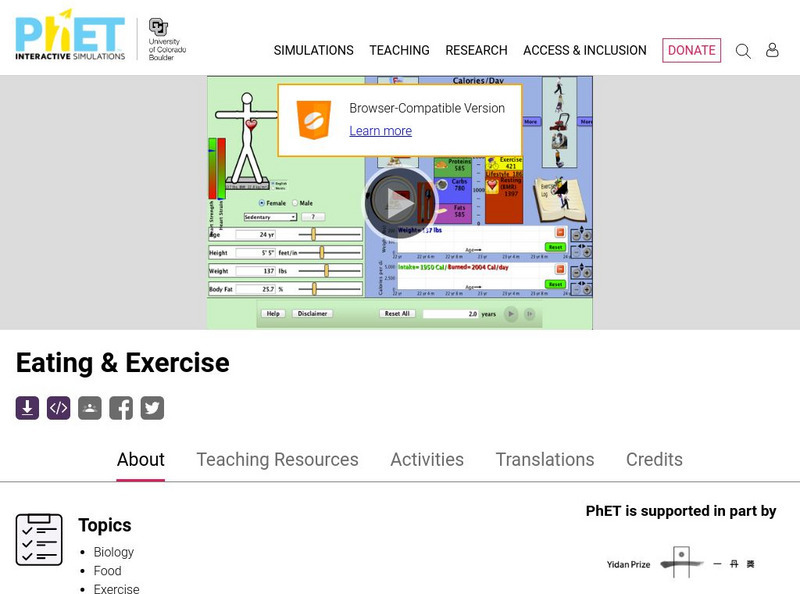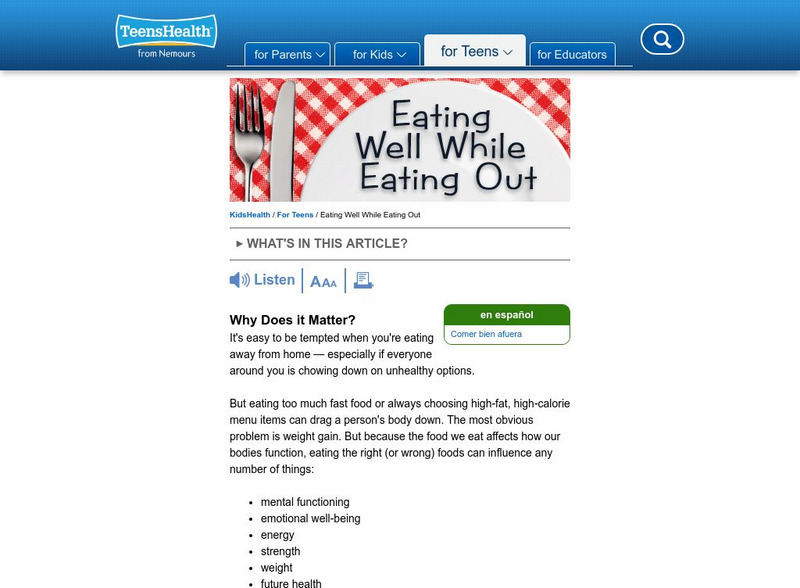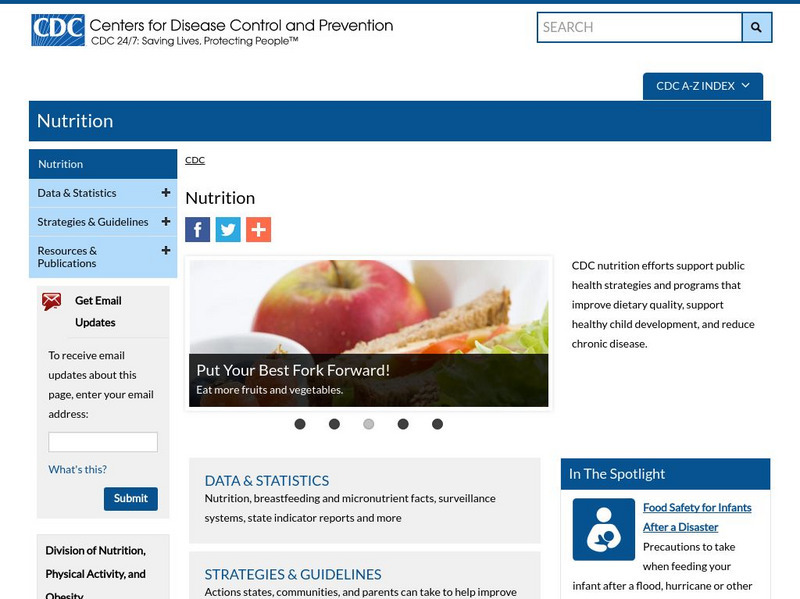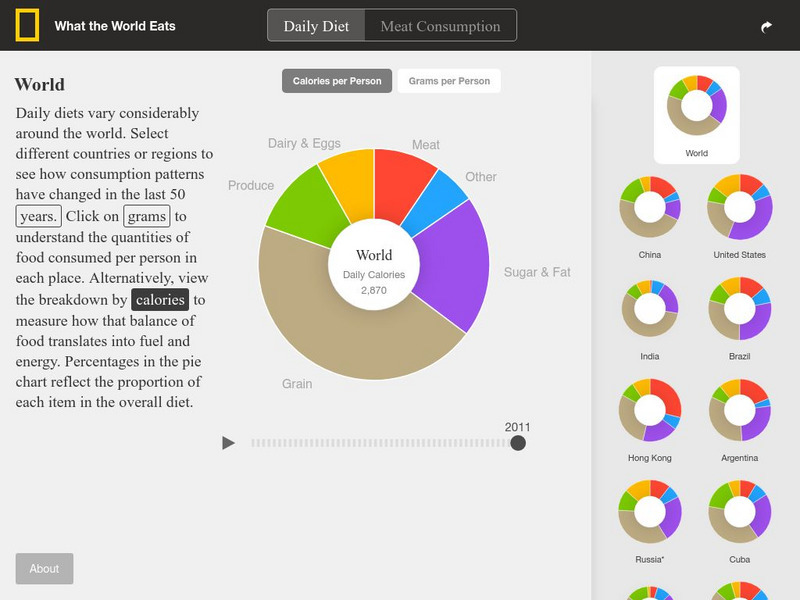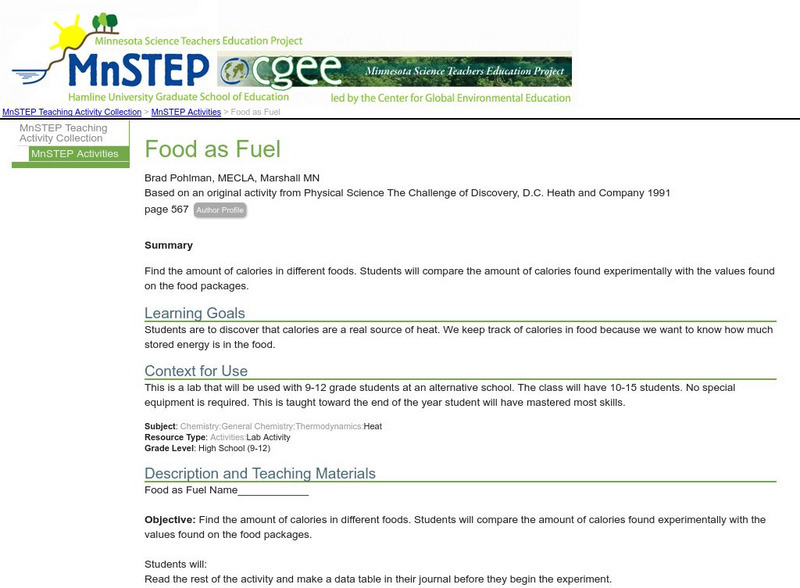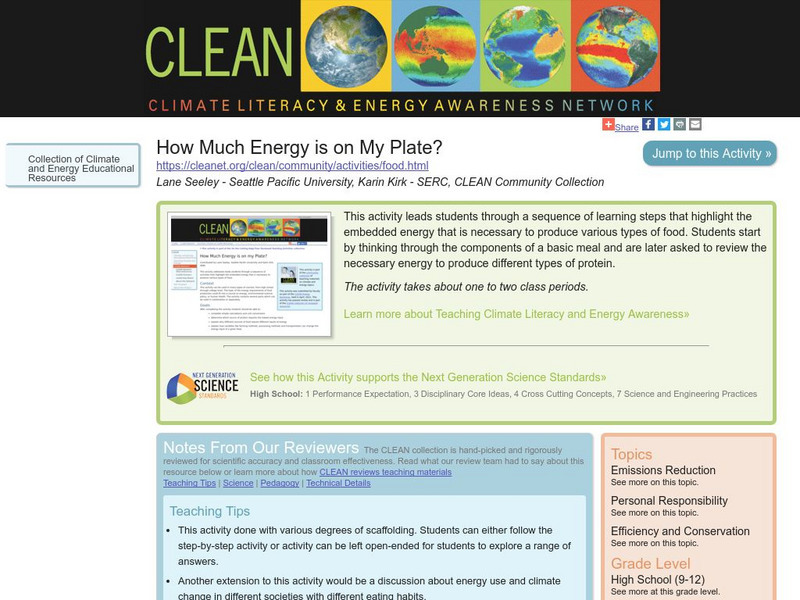Hi, what do you want to do?
Curated OER
Tiny Bites: What Difference Could They Make?
Young scholars explore how small "extra" bites of food can add significant calories to their diet. They estimate how many extra calories they add to their diets by just taking small bites of food throughout the day.
Curated OER
Health: Dear Me
Students examine data supporting the increase in health risks due to obesity. They write letters to their future selves giving strategies for maintaining a healthy weight in adulthood by maintaining an appropriate energy balance.
Curated OER
Get Fit for Yosemite - Nutrition
Students demonstrate an understanding of healthy eating habits and of following a fitness program. They visit Yosemite Institute.
Curated OER
You Are What You Eat (Middle School)
Third graders determine what their ideal weights should be and how many calories should be consumed daily to obtain the ideal weight and/or maintain it. They research and prepare 20 cards regarding nutritional needs, obesity, and health...
Curated OER
What Goes in Must Come Out
Students monitor their calorie intake and energy expenditure. They keep track of daily data in a journal and assess and adjust their diets as appropriate.
Curated OER
Light My Fire
Young scholars determine the number of calories in various products, and the amount of energy created when objects burn.
Curated OER
You're Eating More Energy Than You Think!
Students investigate the concept that different forms of packaging require different amounts of energy.
Curated OER
Oh Nuts! - Calories Count
Learners measure and record the mass of the nut to be tested to the nearest 0.01 gram.
University of Colorado
University of Colorado: Ph Et Interactive Simulations: Eating and Exercise
Interactive animated simulation allows students to make connections between the real world and the physical world. Uses interactive tools to explore issues such as calories, exercise, diet, fitness, and weight control.
US Department of Agriculture
U.s. Department of Agriculture: Choose My Plate
The U.S. Government's official resource for sound nutritional information points out that eating right can be as simple as increasing some categories of foods while reducing others. Basic information on food groups combined with...
Science Buddies
Science Buddies: How Greasy Are Your Potato Chips?
One of America's favorite snacks is potato chips. Although potato chips are very tasty, some varieties are not very healthy for you. A typical 1-ounce (oz.) serving of a well-known national potato chip brand contains 150 calories, 90 of...
Michigan Reach Out
Newton's Apple: Body Fat
Through these lesson plans, investigate the different types of fat found in food and found in the human body. Discuss the functions and problems associated with dietary fat and make wise food choices based on what you learn about fat,...
Curated OER
Kids Health: Figuring Out Fat and Calories
Most people know that fats and calories are connected to our weight, but what is their correlation? This article analyzes their relationship and how an understanding of these items can benefit your body. Links to related articles are...
Curated OER
Kids Health: Eating Well While Eating Out
The older you become the more choices you will have to make about what types of food will make up your diet. This article relates the importance of a well rounded diet. Find out more about how good food has everything to do with how you...
Centers for Disease Control and Prevention
Centers for Disease Control: Nutrition Introduction
The CDC offers a wealth of information regarding several specific topics that fall under nutrition including good health, exercise, diet and more.
National Geographic
National Geographic: What the World Eats
This interactive website offers pie charts showing what the world eats and what 22 different countries eat. It also allows you to choose by year as well. These include food groups, calories, and grams overall and per category.
US Food and Drug Administration
Fda: The Nutrition Facts Label
This colorful printable gives you a quick look at the key information you can find on the Nutrition Facts label.
US Food and Drug Administration
Fda: Cool Tips for Kids
Teach your students to use the following easy ways to Read the Label at home, in the cafeteria, at the store, and at restaurants.
PBS
Pbs: Scientific American Frontiers: Teaching Gude: Healthy Choices
Through this activity, high school learners keep track of what they eat everyday and compare their nutrient intake with the minimum requirements for good health.
PBS
Pbs: Scientific American: Never Say Die: Eat Less Live Longer
This site from the PBS production "Never Say Die" provides a section on how to eat less and live longer. The first part of this site discusses food and nutrition. The second part is an activity in which you can make a calorimeter. The...
Science Education Resource Center at Carleton College
Serc: Food as Fuel
Young scholars find and compare the amount of calories found experimentally with the values found on the food packages.
TED Talks
Ted: Ted Ed: What Is a Calorie?
Emma Bryce explains how a few different factors should go into determining the recommended amount of calories for each person. [4:12]
Climate Literacy
Clean: How Much Energy Is on My Plate?
This activity leads students through a sequence of learning steps that highlight the embedded energy that is necessary to produce various types of food. Students start by thinking through the components of a basic meal and are later...
Indiana University
Area 10 Math and Technology Project: Nutrition Labels
Lesson Plan involving all aspects of reading a nutrition label. Emphasizes math skills. Includes links to a teacher outline, student copies and reference materials.













